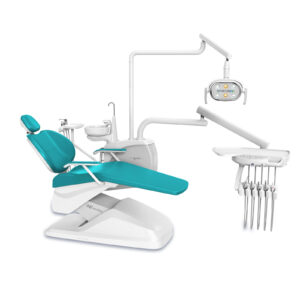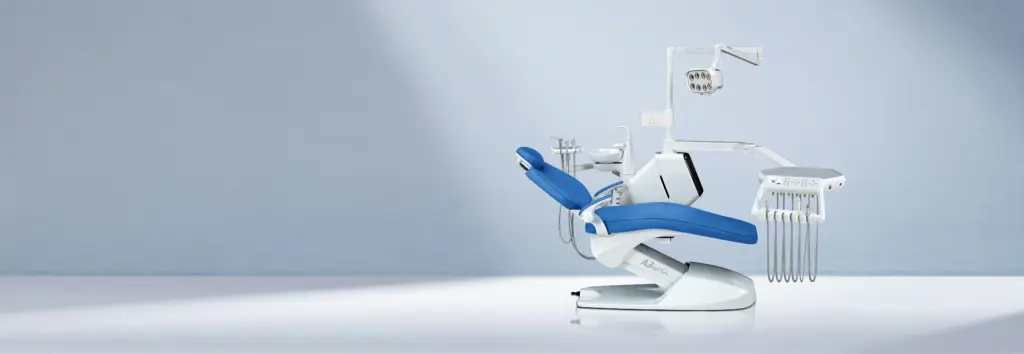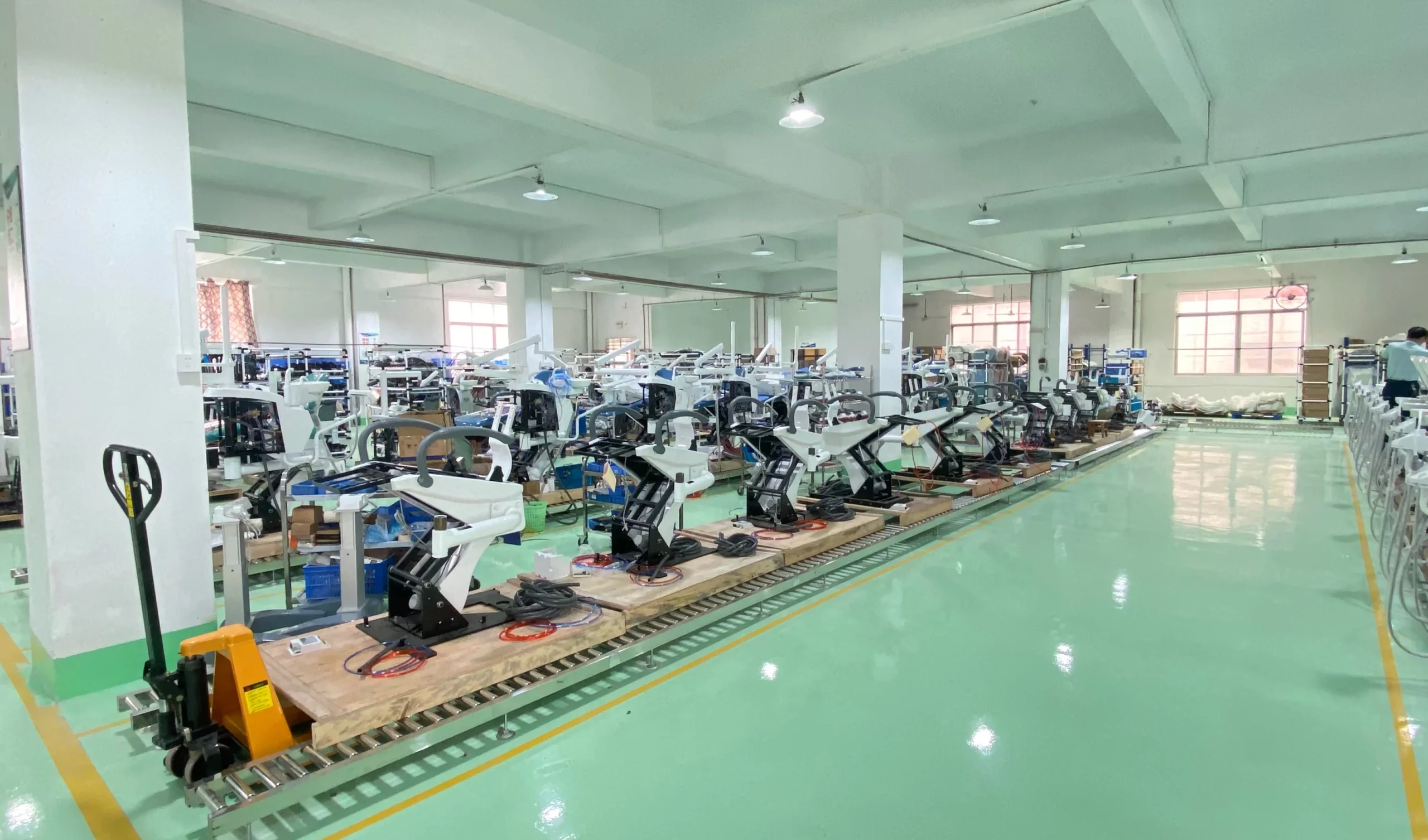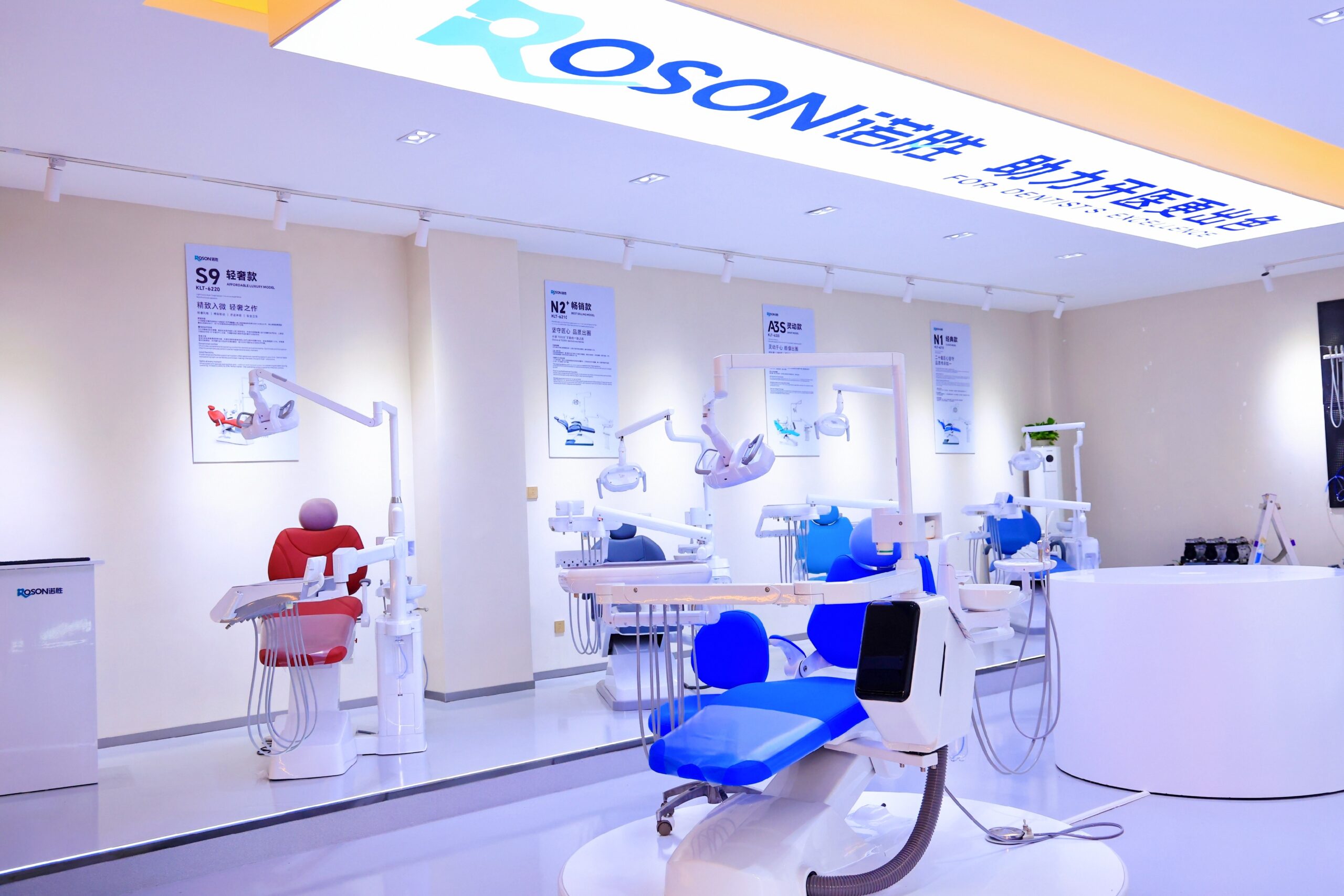Neck and back pain shouldn’t be part of the job. The way your dental stool, dental chair, and dental chair positions are set up plays a huge role in your comfort, focus, and long-term health.
Why Dental Stool Height Is Non-Negotiable?
Poor Posture, Big Problems
Musculoskeletal Disorders – Environment, Health and Safety are extremely common among dentists and hygienists. More than 60% of dental professionals experience pain in the neck, shoulders, or back, as per surveys. These issues do not occur overnight but develop over time, and they may start with minimal posture mistakes because of the inappropriate height of the dental stool.
Neutral Spine Position
Your dentist stool is not just a chair. It’s the platform that keeps your spine aligned and allows you to sit in a neutral, balanced position. When your stool is too high, you raise your shoulders and tighten your neck. When it’s too low, your lower back bends and crunches the discs. Either way, you lose stability and open the door to chronic pain.
Productivity Starts from the Bottom
Correct dental stool height enables you to access instruments efficiently, reduces twisting, and permits your arms to rest in a comfortable position. With your body relaxed and supported, your hands are steady, and your mind is alert. That’s good for your patients—and excellent for your performance.
What Happens When You Use the Wrong Dental Stool for Years?
Daily Pain, Shorter Career Span
Accepting a poorly adjusted dental stool as “good enough” can cut your career short. Chronic back or neck pain can lead to shorter working hours, extended sick leaves, or even early retirement. Seemingly trivial posture issues become serious medical conditions that are costly in terms of time, health, and earnings.

Compensation Movements
When one part of your posture is not correct, the rest of your body tries to make up for it. This leads to unbalanced muscle use. In the long term, these compensations can lead to carpal tunnel syndrome, shoulder impingement, or herniated discs—all of which are common in dentists who don’t pay attention to stool height.
Insurance and Legal Impacts
Some MSDs are bad enough to result in workers’ comp claims or disability cases. The price of a better dental stool is minimal when compared to years of lost earnings and ongoing treatment.
Does Chair Height Affect Treatment Outcomes?
Direct View, Cleaner Work
If the dental chair is too low or too high, your visibility is compromised. That means wasted time adjusting mirrors, straining your neck, or awkwardly bending to see your working field. When the dental chair positions are perfect and paired with your properly adjusted dental stool, your vision is direct, steady, and strain-free.
Patient Safety and Comfort
Improper chair height can lead to sudden movement, loss of balance, and injury to you and your patient. A level setup reduces leaning or movement, keeping your instruments steady and your patient comfortable.
Consistency in Performance
When you’re comfortable and properly positioned, your focus stays on treatment—not on your aching shoulder. That means fewer errors, higher margins, and a smoother workflow, which is good for everyone in the practice.
What Are the 3 Essential Height Adjustments To Make Today?
Elbow Angle between 90–100°
Sit and let your arms hang loose. Place your dental stool in such a position that your elbows form a slight right angle when your hands are on your patient or tray. This prevents shoulder strain and enables you to work longer with less fatigue.
Feet Flat, Thighs Slightly Downward
Your thighs should be sloping downward (10–15°) with your feet flat on the floor. If you are on your toes or your knees are higher than the level of your hips, your dental stool needs to be adjusted. A foot ring may be utilized to keep shorter individuals grounded without dropping the stool too low.
Eye Level to Treatment Field
Your eyes should naturally fall on the patient’s mouth without leaning forward. Adjust the dental chair and dental chair positions so that the treatment area is at your comfortable eye level. This protects your neck and upper back.
Is Chair and Stool Height Actually Worth the Investment?
Your dental chair and stool positions have a direct impact on your posture, performance, and overall health in the long run. Consider them to be fundamental tools, not discretionary accessories. Putting time—and if necessary, money—into an improved setup allows you to prolong your career, minimize the risk of injury, and provide first-rate care. It is not just about comfort. It is about control, safety, and staying in the profession you have invested so much time in learning.

FAQ
Q1. How Do I Know if My Dental Stool Is at the Right Height?
Sit on your dentist stool with your feet flat on the floor. Your thighs should be sloping downwards slightly, and your elbows at about 90–100 degrees when your hands are in operating position. Pressure on the shoulders or back, or leaning forwards repeatedly, is a sign that your stool needs adjustment.
Q2. Can a Bad Stool Actually Do Long-Term Harm?
Yes. Sitting with the incorrect dental stool height daily can slowly evolve into serious musculoskeletal disorders. They include chronic back pain, neck strain, and herniated discs, among others. In the long term, these may require therapy, surgery, or even lead to an early retirement from your profession.
Q3. What Impact Does the Dental Chair Position Have On Me as a Clinician?
Improper dental chair positions will cause you to bend, twist, or hunch over to see better. This introduces physical strain and reduces your accuracy during procedures. A correctly positioned dental chair will work in conjunction with your stool to keep your body position and stability.
Q4. Is a High-Quality Dental Stool a Good Investment?
If you utilize your body to perform complex work on a daily basis, then yes. A quality dental stool offers more support, longer-lasting cushions, and more adjustment ability. These advantages protect your posture, reduce daily discomfort, and extend the life of your career.
Q5. I’m Already Developing Some Back Pain. Is It Too Late to Improve My Posture?
It is never too late to improve. First, have your dental stool and dental chair properly adjusted. Then, attempt to visit a physical therapist who has experience with clinical ergonomics. Implementing some slight modifications now can reduce pain and prevent further injury in the long run.









